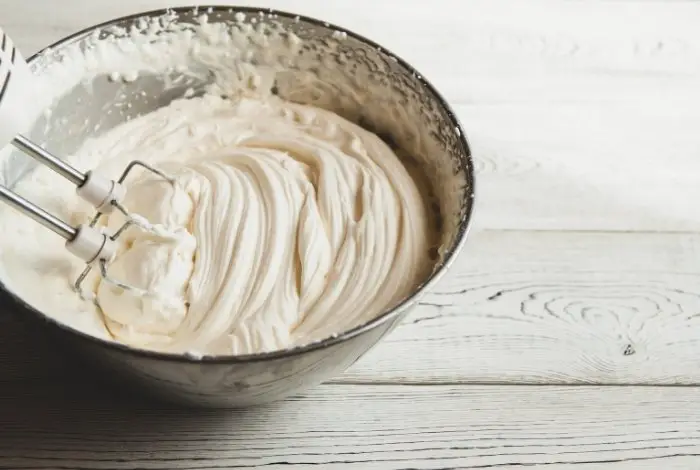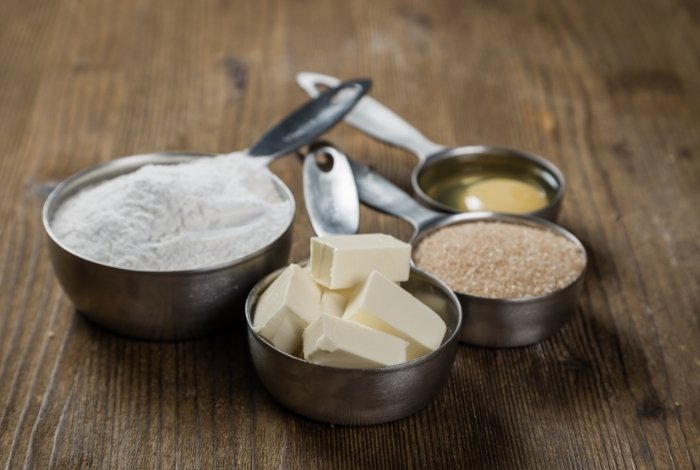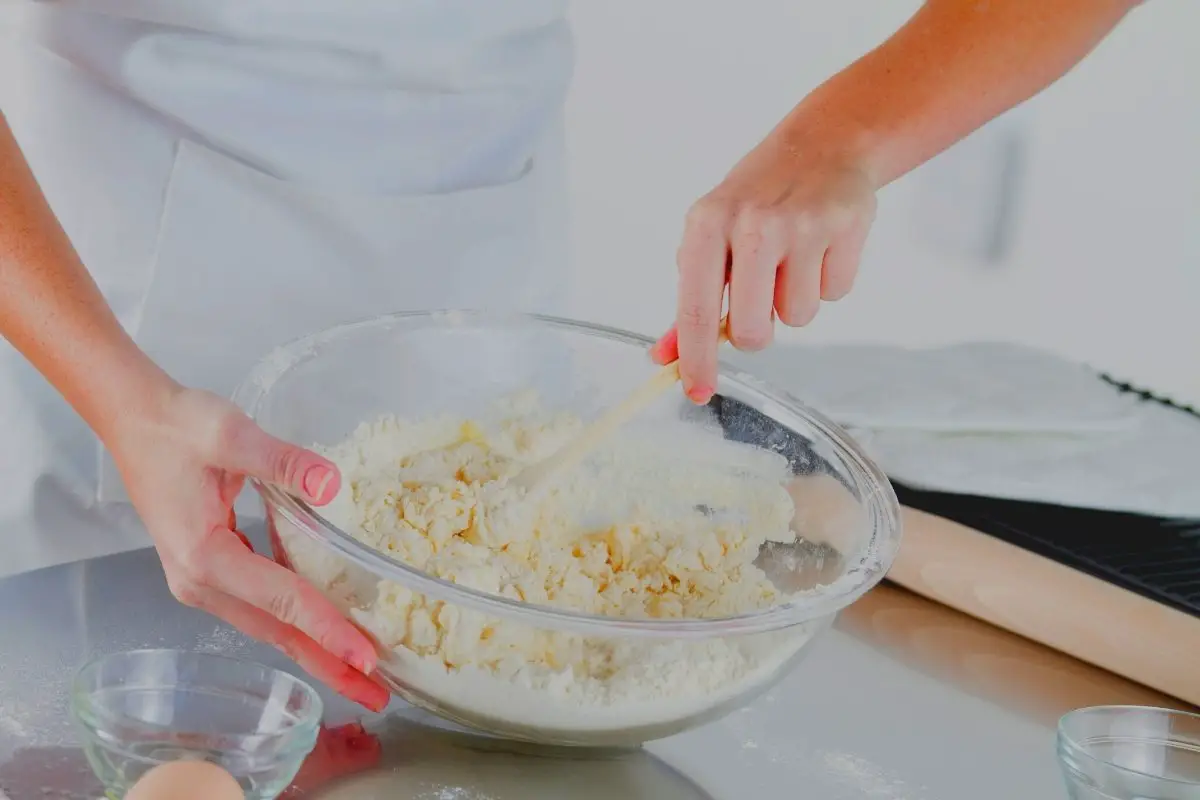Last Updated on January 6, 2023
Why does my cake usually become too dense and rubbery? Here’s the thing; it happens to most bakers. However, there are many ways to avoid it. But first, nobody wants a cake too dense and rubbery. Anyone who has tasted it can agree that it is unpleasant. Better yet, it is indeed frustrating to take every bite of it. That is why it would be best to know these helpful tips to avoid making a cake too dense and rubbery ever again.
Tips to Fix Cake too Dense and Rubbery
1. Never Overmix the Cake Batter
Overmixing the cake batter can lead to a rubbery cake since it produces too much air. Because of this, the trapped air expands. After that, it deflates in the oven. As a result, a deflated cake can turn into a dense cake. That is why you should only blend the dry and wet ingredients till well incorporated.
Likewise, the main reason why a cake becomes too rubbery is due to the overmixing of flour since it activates the gluten. For this reason, it makes the cake hard instead of making it soft and spongey. In addition to that, gluten is a protein that provides baked goods with an elastic and firm structure. However, overdoing it can result in an extremely chewy texture which is not great.

Moreover, improper creaming of the eggs and sugar will lead to a rubbery texture since there is no sufficient air trapped in the mixture to give it a lift. Remember that you should not feel the sugar between your fingers in cake recipes that need you to cream the sugar and eggs. Also, keep in mind to cream the sugar and eggs until you reach a homogenous mixture. As a consequence of not creaming it well, there will be no air in the cake batter.
Whether you are utilizing a stand mixer or mixing the cake batter by hand, the most effective solution you can do is to avoid overmixing it. To guarantee that there will be no big lumps at the bottom of the mixing bowl, use a whisk or spatula to blend it a few times.
You Can Find Delicious Recipes by Clicking Here:
2. Always Use Room Temperature Butter
Typically, cakes start with the creaming of sugar and room-temperature butter together. Because of this, the creaming process is when butter traps air. With that, the trapped air expands and produces a fluffy cake. That is why it results in a dense cake if you did not correctly cream the butter. Hence, no air leads to no fluffiness.
Unfortunately, if you did use room temperature butter, then started creaming it with sugar. However, you left the mixer running. There is a big possibility that the room-temperature butter and sugar will over-cream. As a result, the butter will trap more air than it should. In addition to that, the extra air will deflate and leave you with an exceedingly dense cake.
KUPPET Stand Mixer, 8-Speed Tilt-Head Electric Food Stand Mixer
The most convenient way to achieve the best results is to cream the sugar and room-temperature butter together for approximately one to two minutes. Moreover, it would be best to use room-temperature ingredients, especially milk, eggs, and sour cream, in your cake recipes. However, it depends on what the recipe calls for; if it does, make sure each ingredient is at room temperature when needed.
Also, keep in mind that room-temperature ingredients bond together fast and easily since they are warmer. Because of this, it considerably lessens overmixing.
3. Measure the Ingredients Precisely
Essentially, measure the ingredients precisely because excessively adding liquids to a cake makes it hard to bake. Likewise, it makes the cake rubbery. Also, too much flour in the cake batter will result in an extremely dense cake. It would be best to utilize a spoon and scoop the container’s ingredients into measuring cups till full, especially for dry ingredients like cocoa powder and flour. Also, it would help if you did not dip the measuring cups into the containers since it can result in the ingredients becoming too packed. For this reason, utilize a weighing scale to achieve the most accurate results.

How Long Does a Thick Cake Take to Bake?
Thick cakes can be quite tricky to figure out how long you need to bake them for. This is why most people opt for baking a cake in two thinner layers, rather than one deep one. For example, the baking time of an 8-inch two-layer cake is anywhere between 25-30 minutes, whereas if you put all of the batter into one thick tin, you’ll be looking at just under an hour of baking time!
While there is no set time for a thick cake to bake (as it all depends on the size of the pan and the amount of batter used), there are a few ways to tell if your thick cake is ready. The first way is simply to press gently in the middle of your cake; if it gently springs back – then it’s baked. Another effective way is the implemented method. All you need to do is place a toothpick or skewer into the center of your cake and if it comes out clean (or with very few baked crumbs), it’s ready to remove from the oven.
Let’s take a look at some of the most popular cake pan sizes: 8-inch and 10-inch pans. If you’re making a thick cake using one of these sized pans, you can easily work out how long to bake. In an 8-inch pan, for every ounce of batter, it’ll need around 1.29 minutes to bake. And for a 10-inch pan, for every ounce of batter, it’ll need around 0.9 minutes to bake.
If you’ve noticed that the batter itself is thick, it may be because you’ve overmixed your cake batter. If this is the case, your finished cake is likely to be extremely dense, and won’t be able to hold its shape well; it may even sink in the middle.
What Can I Do With Dense Cake?
If you’ve made your cake and it’s not turned out quite as you expected, there are still plenty of ways it can taste good and still be enjoyed. Here are a few of my favorite ways to use up the dense cake.
- Cake pops. All you need to do is break the cake up and mix it with frosting. Cake pops are great at hiding any bake that hasn’t gone quite as planned…and they’re super fun for all the family too!
- Frosting. Frosting can fix just about any cake problem. Whether it’s frosting, icing, or a glaze, no one will know what was really underneath once it’s completely covered.
- Mini cakes. Rather than having one big fancy cake, just cut your cake into classy little squares and serve it individually. You can then only use the bits that you think are okay, and frost them as you would a normal-sized cake.
- Parfait. Just cut your cake into cubes and place it in a glass along with fruit and whipped cream. It’ll look super elegant and doesn’t require much effort at all!
How Do You Fix a Watery Cake Mix?
So you’ve made your cake batter and it just seems a little too runny. If this sounds like you, don’t worry! There are plenty of quick fixes to save your batter.
The easiest way is to add a tablespoon or two of extra flour until it reaches the right consistency. Adding dry ingredients like flour is a quick and easy fix. Another dry ingredient to add is a packet of instant pudding mix.
Many recipes call for this secret ingredient anyway, but it can really salvage a cake mix that’s too runny. And our final suggestion is to add mix-ins, whether it be chocolate chips, nuts, or dried fruit, it’ll really make the batter come together; this works especially well if you coat them in cornstarch before you add them to the batter. Cornstarch is renowned for being a great thickening agent. Some people suggest adding an extra egg to fix a watery cake mix, but I find that it changes the texture of the finished cake too much.
Follow the Recipe to Avoid a Cake Too Dense
In most cases, you can easily substitute ingredients from one to another. However, try to follow the recipe as much as possible. For instance, cake flour is indeed more fine in texture than all-purpose flour. That is why cake flour-based batter will be lighter compared to the all-purpose flour-based batter. In addition to that, when whipped with butter, caster sugar will give more air bubbles than regular white sugar.

Zarah is an experienced pastry chef whose creations have delighted countless customers. With a passion for baking, Zarah has developed a unique style that combines classic techniques with modern flavors. Her desserts are consistently crafted with the finest ingredients, and her attention to detail is evident in the stunning and delectable results. Zarah has a wealth of experience in the pastry kitchen, and loves to share her knowledge with others. Whether it is teaching a class or creating a custom cake for a special occasion, Zarah is committed to making sure every customer is satisfied.


